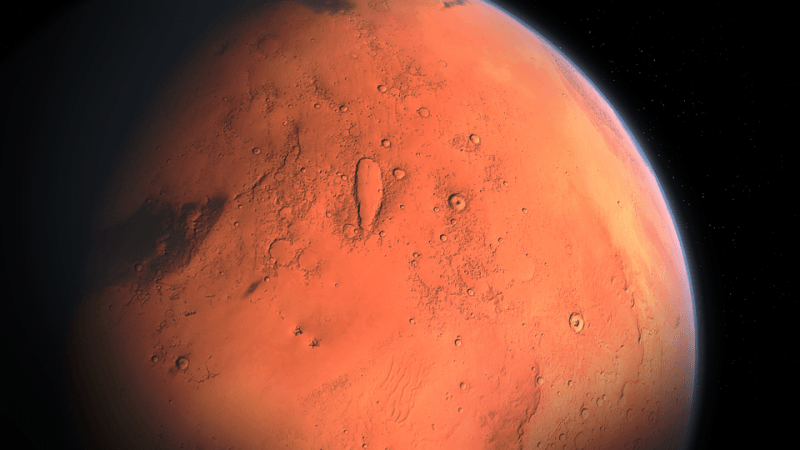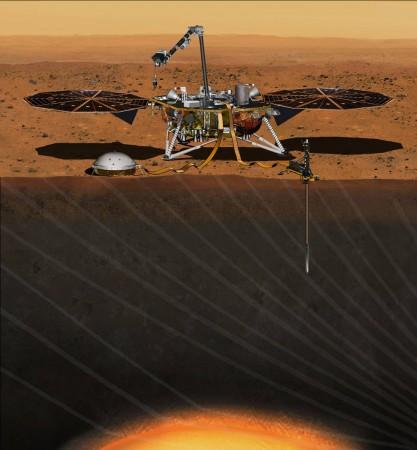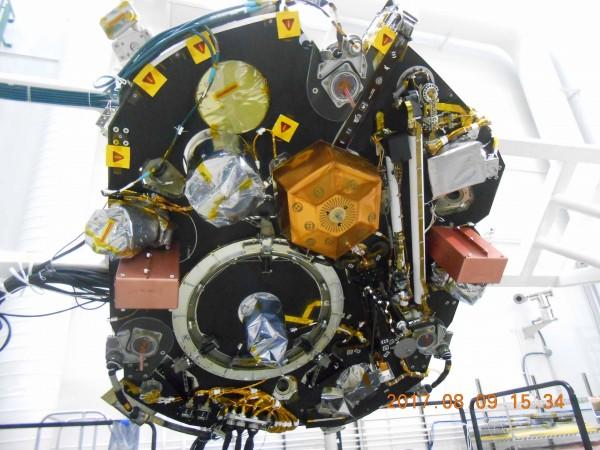
NASA aims at exploring the interiors of Mars with the help of its InSight spacecraft on its next mission.
ALSO READ: Astronomers map alien supermassive star Antares; all you need to know
Here are the top things you need to know about this future mission:
1. InSight stands for Interior Exploration using Seismic Investigations, Geodesy and Heat Transport. It is a robotic Mars lander manufactured in 2010 and will be launched in May 2018 from the Vandenberg Air Force Base in central California.
2. The spacecraft was initially scheduled to be launched for Mars in 2016, but a leak in a metal container that was devised to maintain near-vacuum conditions around the seismometer's main sensors put a stop on the plans.
A vacuum vessel was devised and tested for the instrument again, and then combined with the other components of the instrument and tested again. The full seismometer instrument was delivered to the Lockheed Martin spacecraft assembly facility in Colorado to be installed on the InSight lander.
"We have fixed the problem we had two years ago, and we are eagerly preparing for launch," said InSight Project Manager Tom Hoffman, of the NASA Jet Propulsion Laboratory (JPL).

3. This robotic Mars lander will be the first interplanetary launch from the US' West Coast. It is currently being tested in a room near Denver.
"Our team resumed system-level integration and test activities last month," said Stu Spath, spacecraft programme manager at Lockheed Martin.
"The lander is completed and instruments have been integrated onto it so that we can complete the final spacecraft testing including acoustics, instrument deployments and thermal balance tests," he added
4. Astronomers are looking forward to new data from InSight about the interior of the Red Planet, as it will help us understand the origins of rocky planets like Earth.
5. An international team of researchers led by Bruce Banerdt had proposed the mission and won a competition by NASA that involved another 27 proposals for space missions across our solar system.
"Because the interior of Mars has churned much less than Earth's in the past 3 billion years, Mars likely preserves evidence of rocky planets' infancy better than our home planet does," said the InSight Principal Investigator Bruce Banerdt of JPL.

6. The InSight mission will be launched during a five-week period starting from May 5, 2018. It will reach Mars on the Monday after Thanksgiving in 2018.
7. The astronomers have chalked out a plan about the 6-metre stationary lander that will be placed near the equator of the Red Planet. The lander possesses two solar panels which spread out like a paper fan.
8. A robotic arm will be used by the InSight lander to place two of its instruments directly into the Martian surface and carry out unprecedented activities on the planet. The two instruments that will be used by the space agency are:
- A seismometer supplied by France's space agency CNES with collaboration from the United States, the United Kingdom, Switzerland and Germany. It is protected from wind and has sensitivity fine enough to detect ground movements of half the diameter of a hydrogen atom.
It will record seismic waves from "marsquakes" or meteor impacts that reveal information about the planet's interior layers. - A heat probe designed to hammer itself to a depth of 3 metres or more and scale the amount of energy coming from the planet's deep interior. The heat probe is from the German Aerospace Center DLR, with the self-hammering mechanism from Poland.
9. In a third experiment, radio transmissions will be used between Earth and the Red Planet to analyse the perturbations in how Mars rotates on its axis. This will point towards the size of the planet's core.
10. The InSight lander, along with two active NASA Mars rovers, three NASA Mars orbiters and a Mars rover — all of which are being built for launch in 2020 — is part of a legacy of robotic exploration to aid in laying the groundwork for sending humans to Mars by the 2030s.

















